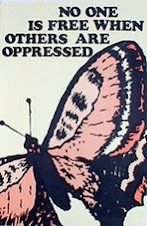 So, Damien Hirst (photo, with one of his sharks in formaldehyde) got away with it.
So, Damien Hirst (photo, with one of his sharks in formaldehyde) got away with it. The recurring nightmare of the frivolous chief charlatan in Britain's twisted 'art' world - that Sotheby's auction of his latest works would attract no bids - turned out to be just a bad dream.
In the event, a total of £ 70.5 million was raised last night - a comfortable margin over the £ 65 million estimated - as the super-rich buyers of Hirst's products (one really cannot call them Art) refused to be put off by the catastrophes on Wall Street.
With 56 lots sold, and another 127 to be auctioned today, Sotheby's are already claiming a record for a sale dedicated to an individual 'artist'.
Hirst did not attend the auction – he was apparently playing snooker with Ronnie O'Sullivan in Camden Town – and nor did any of the starry crowd, including Bono, who attended his pre-sale party on Saturday. But Hirst's Irish business manager was there and made sure the money was rolling in and counted.
Norman Rosenthal, former exhibitions secretary at the Royal Academy in London, who controversially introduced Hirst to a wider public in 1997, said: "Banks fall over, art triumphs."
Art? Well, yes, there are some people who regard Hirst as an 'artist' and his products as 'art'. But if one looks a bit closer and checks who these people are, one makes a very interesting discovery: Almost all fans of Damien Hirst belong to the super-rich cast of the international jet set, with a few clueless politicians and mediocre media people thrown into the mix as a bargain.
None of these wasters of time and money has any proper education in the Arts, and for most of them art means only two things: showing off to other wasters, and a chance to invest some of their large fortunes, in the hope that prices will rise. And they almost always do in the art world.
For normal people, who don't have millions, but an education and enough common sense, Hirst is nothing but a frivolous charlatan, who exploits the mental poverty as well as the fiscal riches of his shallow and self-obsessed audience. He lives very well off his prey, being a multi-millionaire himself by now and a virtual recluse in his splendid home in Devon. But like any predator, from time to time he has to come out of hiding, in order to find new victims.
Having no real artistic talent, all Hirst usually does is to acquire some dead animals and put them into large glass tanks, filled with formaldehyde. (Actually, the real physical work is done by his employees. All Hirst contributes is the 'idea'.) That's it. Yes (for those who are lucky enough never to have heard of him), this is all he does. And then he calls the objects 'art' and sells them to super-rich but brain-dead admirers for millions of pounds or dollars. (To be precise, the actual selling is done by a crafty Irishman - his business manager - who would sell his grandmother in formaldehyde if he would get enough money in return. The 'artist' Hirst is by now above such trivial things as marketing...)
The emergence of Hirst and a whole group of similar charlatans - including the awful, vulgar and rude Tracey Emin - from the sewer of contemporary British society only shows how far down the road to total decadence the UK has gone. It is disgusting and should be ignored by all who care for real artists and enjoy proper art.
There is only one reason why I am writing this, instead of ignoring Hirst and his shenanigans: It is the unbelievable hypocrisy of the fans, sponsors and collectors of Hirst & Co.
The people who spend millions on Hirst's products are the very same we see ever so often come out of their glitzy fantasy world, populated by rich and super-rich nobodies, and appeal in an emotional way to the rest of us to give money to certain charities or 'good causes' they 'support'.
Yes, they 'support' these charities, by talking about them and gaining a bit extra public exposure that way as well. But very few of these so-called 'celebrities' actual give any money themselves. That they leave to us 'ordinary people'. The super-rich spend their money rather on themselves than sending it to Africa, Asia or other far-away places nobody really cares for. They attend and give lavish parties, spend fortunes on clothes and jewelry, houses and cars, and - if there is some left for extra fripperies - on the products of Damien Hirst and other 'artists' of his ilk.
Would they really care for the charities they promote now and then, they would donate the sums paid to Hirst & Co. to exactly those charities. People like Hirst might then have to work for their living (he actually did for some time, on building sites and in a mortuary) and the world of art, as well as the world in general, would be a better, sounder and more tasteful place.
So, next time some rich 'celebrities' ask you to give your hard-earned money to their 'favourite charity', think twice and ask the show-offs about their favourite artist first. If the answer is Hirst, Emin or any ot the other frivolous charlatans, keep your money and tell the 'celebrities' to put first their money where their mouth is.
The Emerald Islander







































1 comment:
Dear sir,
I'm an admirer of your blog but I'd like to make a comment on this particular post.
You mention at the end that art should be "tasteful". What precisely does that mean? And who should be the arbiter of taste in this instance?
I tend not to pay much attention to what art makes at auction, for the simple reason that it is irrelevant to the appreciation of art. Whether someone decides to spend ten or twenty or 100 million on Mr. Hirst's work is utterly irrelevant to its quality. To cite a well-worn example, Van Gogh's work was practically unsellable when he was alive. Now it's worth millions. It has nothing to do with its artistic value; it's simply due to a demand in the market. Yet this is the one thing which so many Irish people fixate on: not its quality, but whether it's worth something. When I used to say to people that I was an artist, men in particular always asked me "can you make a living out of that?" and nothing else. I'm not a particular fan of Mr. Hirst, as I feel he's a very clever media manipulator rather than a good artist, but what some rich person wants to pay for it matters nothing to the quality of his work .
A related point: isn't it interesting the way that Mr. Hirst and his ilk (as you call them) get so much negative media attention? Rather than, say, giving attention to serious but less flashy, contemporary artists, the newspapers seem to loudly thrash Hirst & Co on a regular basis, thus giving them acres of free publicity. The same media seems not to have a problem with the obscene amounts of money involved with football or rock music, however...
A standard way for the media to attack something it dislikes is to focus on its most extreme exponents and hold them up as representative. In France, they discuss art seriously, but demand high quality; in England, the most showy and provocative artists are held up as representative, therefore reinforcing the notion that all contemporary art is shallow and trivial, and therefore deserving of contempt.
Art should be beautiful, but it should also challenge the viewer into reevaluating their view of life (this is not the same as shocking him/her, however). I don't think Mr. Hirst does this, but I think it's revealing of the attention paid to visual art in Ireland that the only debate on his work is so often "this rubbish is worth £xxxxx".
Your blog is excellent: keep up the good work!
Yours, etc.
Post a Comment